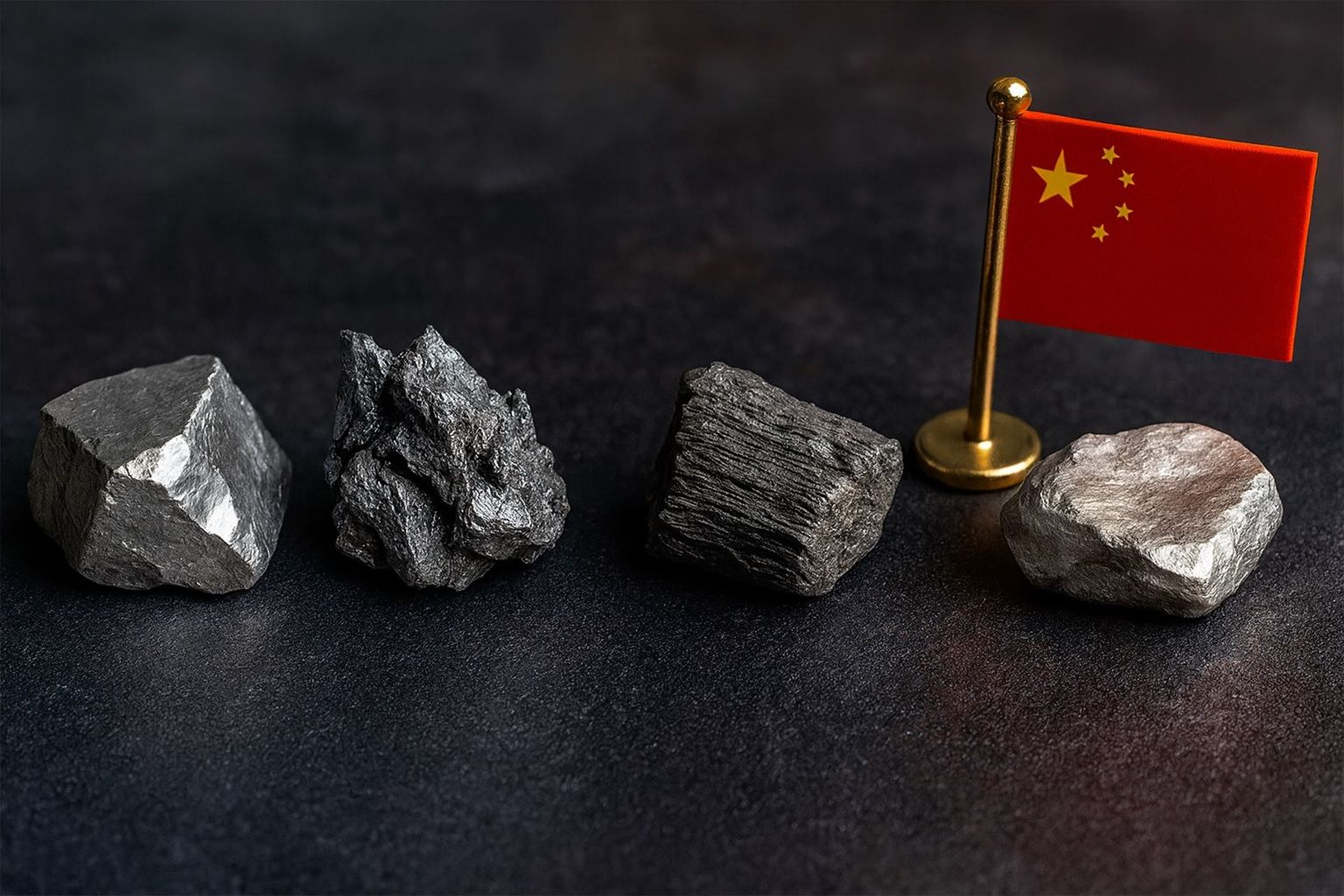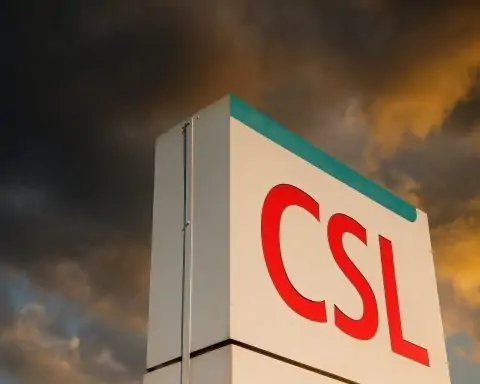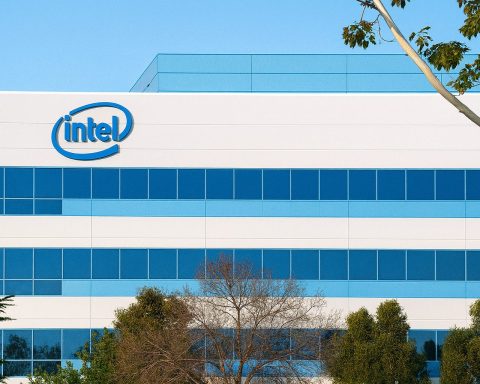- New Chinese Curbs: On Oct. 9, China’s Commerce Ministry announced sweeping export controls on five more rare-earth metals (holmium, erbium, thulium, europium, ytterbium), bringing 12 of the 17 rare-earth elements under export restrictions [1] [2]. Dozens of related processing technologies and equipment were also added to the control list [3] [4].
- US Retaliation: In response, President Trump vowed 100% tariffs on all U.S.-bound Chinese goods and new export controls on software [5] [6]. Washington officials called the Chinese move a “hostile” step and said they’re “closely assessing” the impact [7] [8].
- Market Reaction: The news rattled global markets. Big Tech stocks fell sharply (the “trade war shockwaves have sent Big Tech shares tumbling” [9]), while rare-earth miners’ stocks surged. U.S. miners like MP Materials and USA Rare Earth jumped double digits (MP gained ~12%, USA Rare Earth ~19% in early Oct. [10] [11]). Allied companies in Europe and Australia (e.g. Lynas) also saw buying pressure on expectations of Western supply-chain shifts [12] [13].
- Strategic Stakes: Rare earths are critical to high-tech and defense: they power everything from EV motors and smartphones to F-35 jets, submarines, missiles and AI chips [14] [15]. China dominates this sector (mining ~60% and processing ~90% of global supply [16] [17]), so experts warn Beijing’s move is “strategic” leverage ahead of U.S.-China talks [18] [19]. Analysts like Tim Zhang (Edge Research) say it boosts Beijing’s bargaining power “ahead of the anticipated Trump-Xi summit” [20].
- Supply-Chain Split: Commentators caution this may bifurcate global tech supply chains. Benchmark Minerals’ Neha Mukherjee predicts a “structural bifurcation” with China doubling down on its own chain while the U.S. and allies rush to build alternate sources [21]. CSIS analysts likewise note the U.S. and partners are scrambling (see below).
- Industry Moves: In recent weeks the U.S. government and companies have moved to reduce China-dependence. The Pentagon injected $400M into MP Materials (making DoD its largest shareholder and locking in a high price floor for NdPr magnets) [22]. Australia’s Lynas Rare Earths has teamed with U.S. firm Noveon to provide “capacity, certainty and speed” in delivering permanent magnets to U.S. industry and defense [23]. Europe is also drafting laws (e.g. the EU’s Critical Raw Materials Act) to secure non-Chinese rare-earth supplies [24].
What Happened: China’s New Controls
On Oct. 9, China’s Ministry of Commerce issued “Announcement No. 61” of 2025, dramatically expanding export controls on critical minerals [25] [26]. Five additional rare-earth elements (holmium, erbium, thulium, europium, ytterbium) were added to the restricted list, on top of seven elements already curbed in April [27] [28]. In total 12 of the 17 rare-earth metals now require special licenses for export [29]. Beyond raw elements, China also slapped new controls on processing equipment and technology needed to refine these minerals [30] [31]. Notably, Chinese rules will apply extraterritorially: foreign firms using Chinese-sourced rare earths or technology must obtain Chinese approval even to export finished magnets or high-tech products [32] [33].
Chinese officials justified the move on national security grounds, stressing that many rare-earth uses are “dual-use” (civilian and military) [34]. A Ministry of Commerce spokesperson warned that some foreign entities were transferring Chinese rare-earth materials for “military and other sensitive applications,” posing a security threat to China [35]. However, analysts say the timing is highly strategic. The curbs were unveiled just three weeks before a planned face-to-face meeting between President Trump and President Xi Jinping (slated for late October at the APEC summit) [36] [37]. As Reuters notes, “This helps with increasing leverage for Beijing ahead of the anticipated Trump–Xi summit” [38].
China did caveat that civilian trade wouldn’t be unduly harmed – promising to process export licenses and even allow some emergencies (medical relief etc.) as exceptions [39] [40]. But overall the message is clear: China is signaling it can choke off supplies if pressed. CSIS experts observe that this escalates Beijing’s long-running strategy to “weaponize its dominance in rare earths” [41].
US Response and Trade Tensions
Washington immediately fought back. On Oct. 10, President Trump announced via Truth Social a 100% tariff on all Chinese exports to the US, plus new export controls on software [42] [43]. The White House says it is “closely assessing” the fallout from China’s unannounced export curbs [44] [45].
China reacted by calling Trump’s tariffs “hypocritical” and defending its own measures as legitimate and compliant with international norms [46] [47]. In a lengthy statement, Beijing characterized U.S. actions (like blacklisting Chinese firms and imposing port fees) as “double standards”, insisting it “does not want a tariff war but is not afraid of one.” [48] [49]. China also promised that its controls on civilian exports would not amount to an outright ban, saying any compliant civilian use applications “will be approved” [50].
Economists and traders warn that this tit-for-tat could derail the tentative trade truce. Reuters notes the renewed tensions “rattled Wall Street”, with tech-heavy indexes falling as foreign companies dependent on Chinese rare-earth processing grew nervous [51]. The fear is that these clashes could scuttle the planned Xi-Trump summit, or at least make negotiations much harder. GreenPoint analyst Alfredo Montufar-Helu observes that China’s explicit explanation of its curbs “clarif[ies] the rationale” and signals “the ball is now in the U.S. court,” potentially laying a path for negotiation [52].
Market Turmoil: Tech Slide, Miners Surge
Financial markets reacted sharply. The broad trade-war jitters sent many equities lower, but rare-earth and critical-metal stocks have bucked the trend. On Oct. 9–10, U.S. rare-earth miners jumped as investors anticipated windfalls from China’s self-imposed export squeeze [53] [54]. For example, USA Rare Earth (NASDAQ: USAR) – a Texas-based miner – leapt nearly 19% in one day, trading in the mid-$30s per share [55]. MP Materials (NYSE: MP), the leading U.S. REE miner, climbed about 12% to multi-year highs (around $75–80) on those days [56] [57]. Analyst reports confirm the rally: MP’s stock is up roughly 4-fold so far in 2025 [58], reflecting renewed investor confidence in domestic rare-earth supply chains. Other specialty-mining stocks (critical metals, magnets, etc.) saw similar spikes [59].
Conversely, many Chinese industrial and tech firms fell on the news. And major tech players (FAANG-style stocks) slid as U.S. 100% tariff news broke, echoing concerns of a renewed tech cold war [60]. Google and Microsoft were down on Oct. 10, and U.S. chipmakers like Nvidia and Qualcomm also saw sell-offs amid trade worries. (Notably, China has already targeted Nvidia with an antitrust probe [61] and recently flagged Qualcomm’s acquisitions [62], so U.S. chip multinationals are on edge.)
While these shocks are short-term, analysts note that long-term expectations remain robust for rare-earth miners. Many Wall Street brokers now rate MP Materials a “Moderate Buy” or higher (average 12-month target ~$65–70 [63]). Bulls argue that government contracts justify its premium: “the contract with the DoD provides reliable cash flow,” one Motley Fool analyst noted [64]. However, skeptics warn that the current rally may have outpaced fundamentals – MP still runs at a loss and is investing heavily, so any slip-up could trigger a pullback [65] [66].
Strategic Implications and Supply Chains
Rare earths are often called the “vitamins” of modern tech – obscure but ubiquitous. These 17 elements are essential for powerful magnets, batteries, chips and sensors [67] [68]. A CSIS explainer highlights their use in F-35 fighters, Navy subs, Tomahawk missiles, Predator drones, precision-guided munitions, radars and even Abrams tank armor [69] [70]. They also underpin civilian tech like EV motors, wind turbines, smartphones and AI chips.
Because of this, China’s near-monopoly is seen as a strategic vulnerability for the U.S. and its allies. The U.S. Geological Survey reports about 70% of U.S. rare-earth imports (compounds and metals) still came from China as of 2023. CSIS analysts say until new mines and refineries come online, “China retains a significant amount of leverage over supply chains crucial for national and economic security.” [71] [72]. Indeed, China has hinted it will reject any export licenses for military end-uses, effectively aiming to prevent its rare earths from bolstering foreign defense programs [73].
Experts warn that the West must move quickly to diversify. For example, Benchmark’s Neha Mukherjee sees the world entering “a period of structural bifurcation”: China will localize its supply chain, while the U.S. and allies accelerate their own rare-earth projects [74]. The EU is already tightening rules and subsidies via its Critical Raw Materials Act to lure investment in European mining and recycling [75]. The U.S. has declared rare earths a national security priority, with recent emergency measures, research funding and Pentagon deals to jump-start domestic output [76] [77].
Industry Response: Partnerships and Production
On the corporate side, companies are racing to build capacity. In July, DoD’s $400M investment in MP Materials not only provided funding but locked in a 10-year offtake for MP’s magnets at a guaranteed floor price of $110/kg [78]. MP is also planning a second U.S. magnet factory (“10X Facility”) to turn its separated rare earth oxide into finished magnets [79]. Channel NewsAsia quotes Adamas Intelligence’s Ryan Castilloux calling MP’s Pentagon deal a “game-changer” for America’s ex-China rare-earth industry [80].
Meanwhile, Lynas Rare Earths (the largest producer outside China) inked a partnership with U.S. firm Noveon Magnetics [81]. The deal will supply both light and heavy rare earth materials to make permanent magnets for U.S. defense, automotive and industrial users [82]. Noveon’s CEO Scott Dunn hailed the move as delivering “capacity, certainty and speed” to U.S. supply chains [83]. Lynas CEO Amanda Lacaze added it will provide U.S. manufacturers with a “secure and traceable” magnet supply chain [84]. These partnerships reflect a broader trend: Western companies and governments are forming vertical supply chains (mining-to-magnets) outside China.
Smaller players are also in focus. USA Rare Earth (USAR), an Austin-based miner, has seen its stock rocket from ~$6 in summer 2025 to over $30 by early October [85], on hopes that its Texas deposit and planned Oklahoma magnet plant will profit from any dislocation. (USAR recently acquired a UK alloy maker, giving it mid-stream capabilities [86].) Analysts caution, though, that such junior miners trade heavily on news and may be volatile – the SPAC-backed USAR saw 5× gains YTD but still carries high execution risk [87] [88].
Outlook: What’s Next?
In the short term, volatility is likely to remain high. If China sticks to its course, we may see periodic shocks to supply (even if major shortages are avoided by license grants). U.S. policymakers are debating further measures – some lawmakers have urged banning exports of chipmaking gear to China in retaliation [89], and national-security hawks in Washington view rare earths as a new battleground.
Looking ahead, analysts expect two possible scenarios. If the U.S.-China summit proceeds and negotiations resume, there may be a temporary easing of tensions (as happened after the April rare-earth restrictions) [90]. But any deal will still leave Western industries nervous, so long-term investments in new mines and processing will continue apace [91] [92]. In fact, some see this conflict as “long-term good news” for non-Chinese miners: it will spur more funding and government backing for alternative projects, albeit at the cost of short-term price spikes and higher costs for tech manufacturers [93] [94].
Bottom Line: China’s rare-earth clampdown marks a sharp escalation in the economic standoff with the U.S. It has immediate market impact – big losses for some tech giants, and big gains for rare-metal miners – and long-term strategic significance. Experts warn that the world is witnessing “the politicization of rare earths”, as these once-obscure elements become key bargaining chips in global power politics [95] [96]. Policymakers in the U.S., Europe and elsewhere now face a race to build resilient supply chains for critical minerals. For investors, the current rally in rare-earth stocks may continue if tensions deepen, but caution is warranted: valuations are high and much depends on political and technological developments.
Sources: Latest news and analysis from Reuters, Al Jazeera, CSIS, and industry reports [97] [98] [99] [100], including detailed commentary in TS2.tech and expert statements. (For full citations see text above.)
References
1. www.aljazeera.com, 2. www.reuters.com, 3. www.reuters.com, 4. ts2.tech, 5. www.reuters.com, 6. www.aljazeera.com, 7. www.reuters.com, 8. ts2.tech, 9. www.reuters.com, 10. ts2.tech, 11. ts2.tech, 12. www.reuters.com, 13. ts2.tech, 14. www.aljazeera.com, 15. www.csis.org, 16. ts2.tech, 17. www.aljazeera.com, 18. ts2.tech, 19. www.reuters.com, 20. ts2.tech, 21. www.reuters.com, 22. www.csis.org, 23. www.reuters.com, 24. ts2.tech, 25. ts2.tech, 26. www.reuters.com, 27. www.aljazeera.com, 28. ts2.tech, 29. www.aljazeera.com, 30. www.aljazeera.com, 31. ts2.tech, 32. www.reuters.com, 33. ts2.tech, 34. www.aljazeera.com, 35. www.aljazeera.com, 36. ts2.tech, 37. www.aljazeera.com, 38. ts2.tech, 39. ts2.tech, 40. www.reuters.com, 41. www.csis.org, 42. www.reuters.com, 43. www.aljazeera.com, 44. www.reuters.com, 45. ts2.tech, 46. www.reuters.com, 47. www.aljazeera.com, 48. www.aljazeera.com, 49. www.reuters.com, 50. www.reuters.com, 51. www.reuters.com, 52. www.reuters.com, 53. ts2.tech, 54. ts2.tech, 55. ts2.tech, 56. ts2.tech, 57. ts2.tech, 58. ts2.tech, 59. ts2.tech, 60. www.reuters.com, 61. www.reuters.com, 62. www.reuters.com, 63. ts2.tech, 64. ts2.tech, 65. ts2.tech, 66. ts2.tech, 67. www.csis.org, 68. www.aljazeera.com, 69. www.csis.org, 70. www.aljazeera.com, 71. www.csis.org, 72. ts2.tech, 73. www.csis.org, 74. www.reuters.com, 75. ts2.tech, 76. www.csis.org, 77. www.csis.org, 78. www.csis.org, 79. www.csis.org, 80. ts2.tech, 81. www.reuters.com, 82. www.reuters.com, 83. www.reuters.com, 84. www.reuters.com, 85. ts2.tech, 86. ts2.tech, 87. ts2.tech, 88. ts2.tech, 89. www.reuters.com, 90. www.csis.org, 91. ts2.tech, 92. www.csis.org, 93. ts2.tech, 94. www.csis.org, 95. ts2.tech, 96. www.reuters.com, 97. www.reuters.com, 98. www.reuters.com, 99. ts2.tech, 100. www.csis.org










